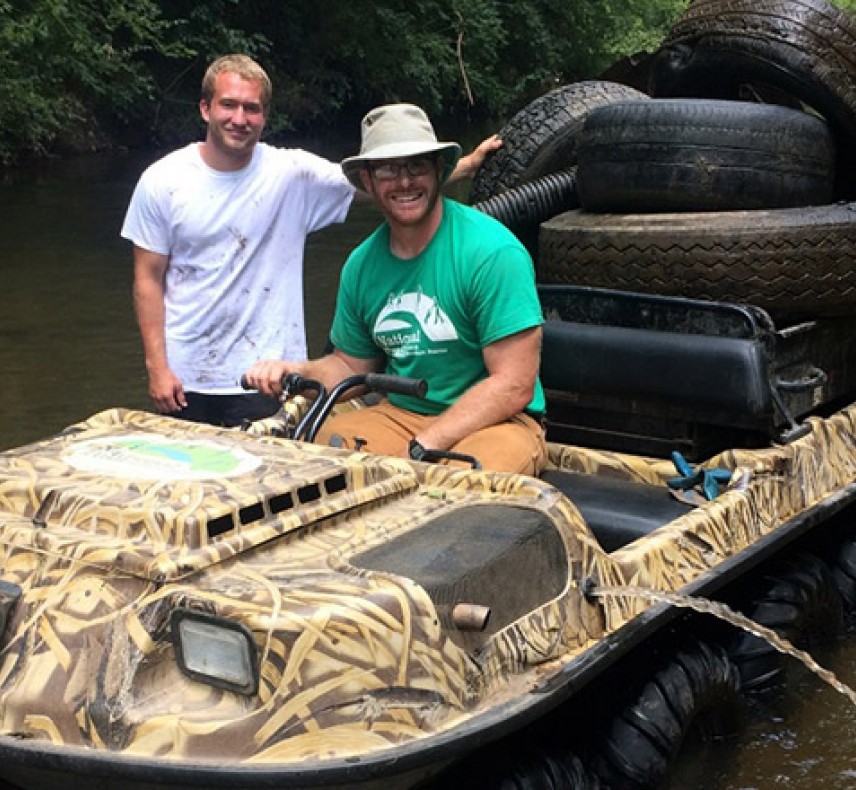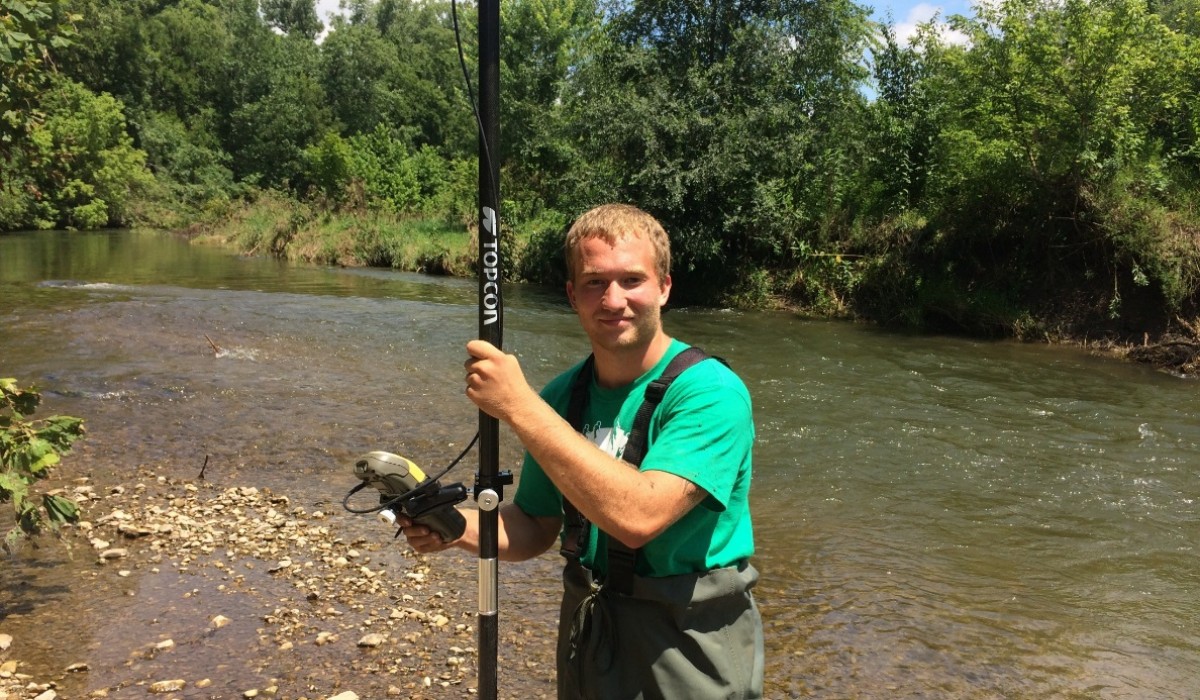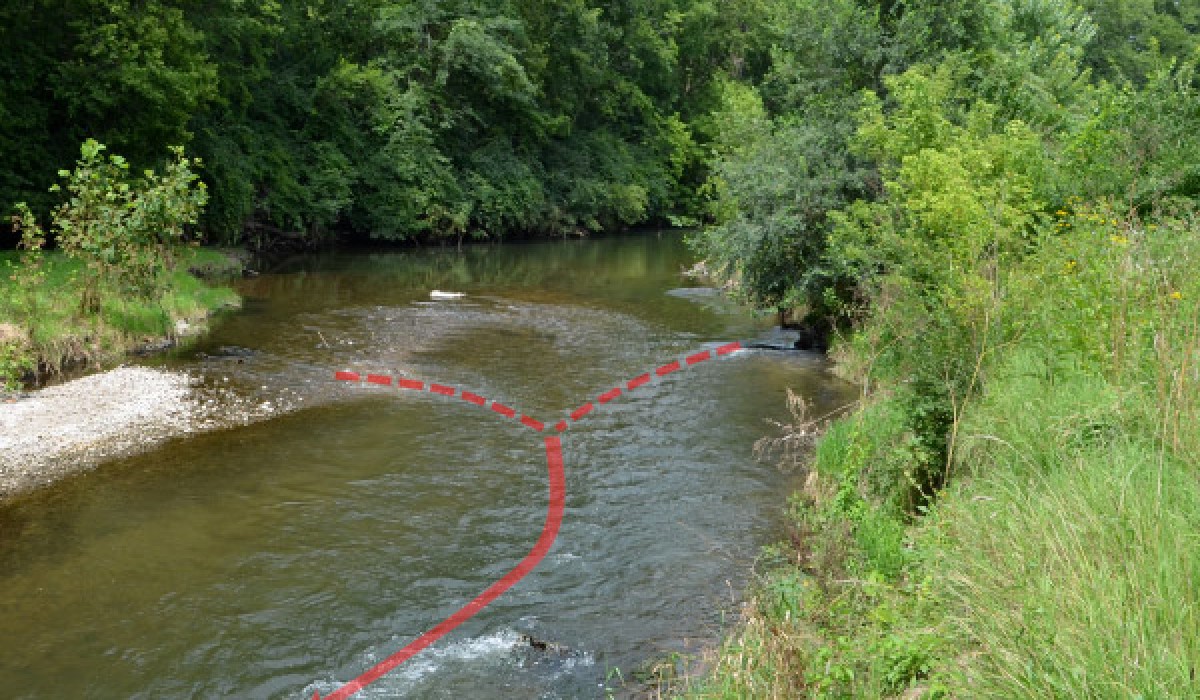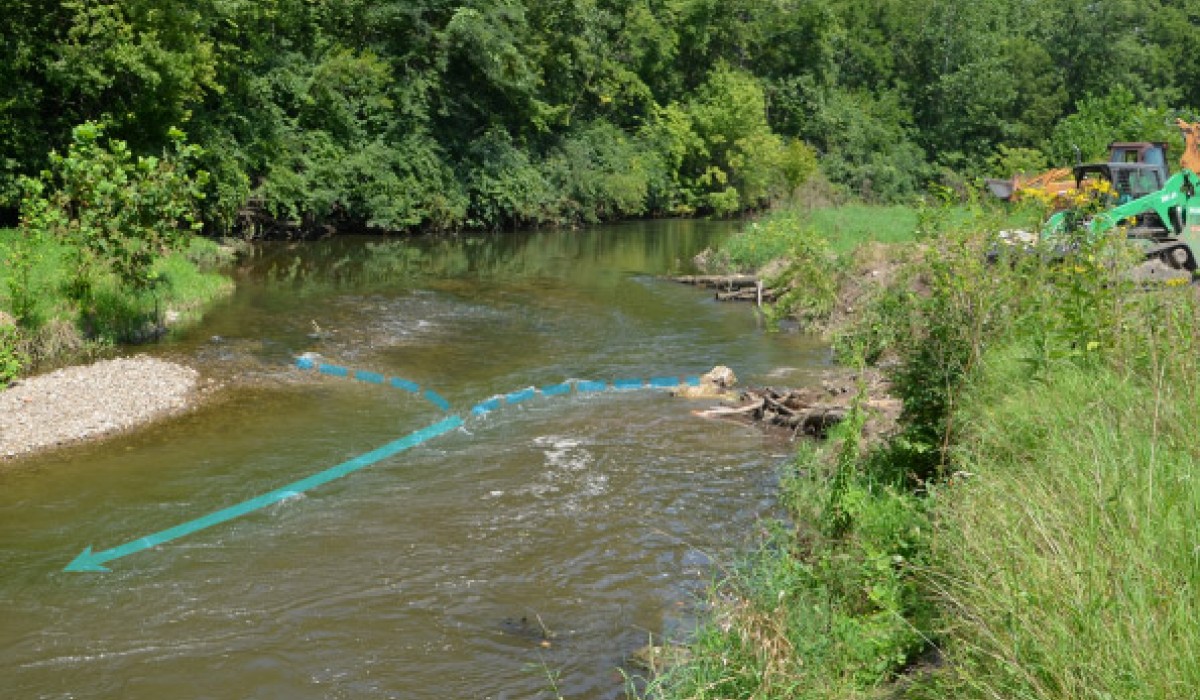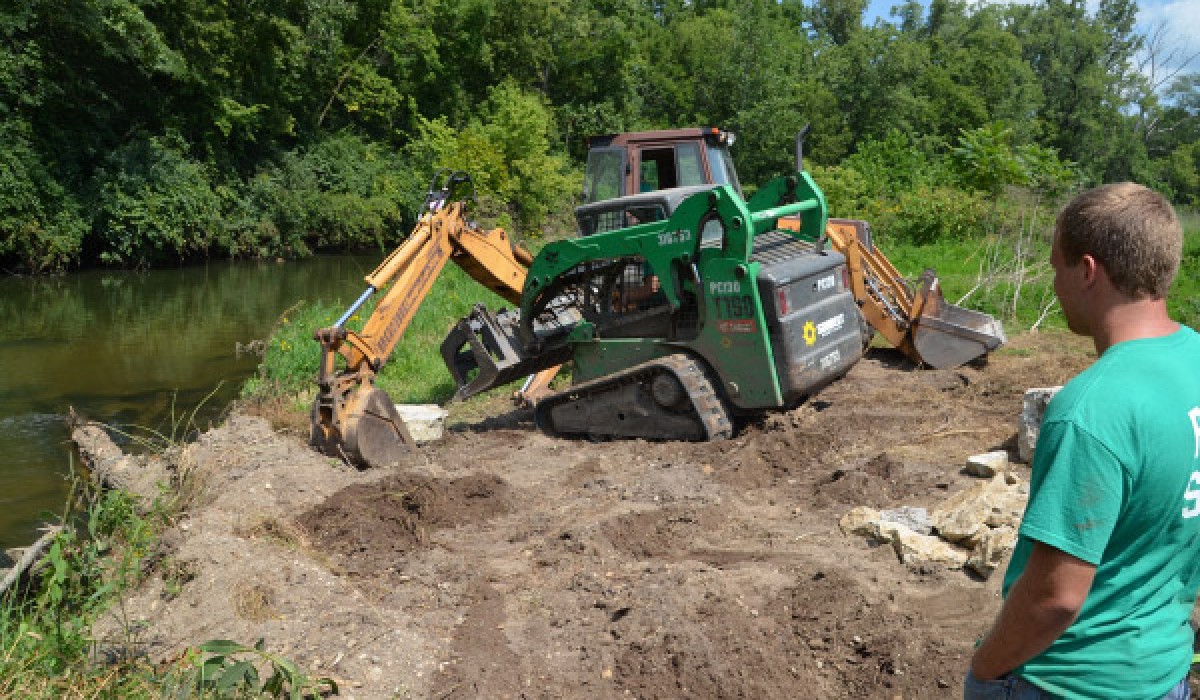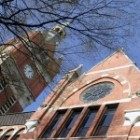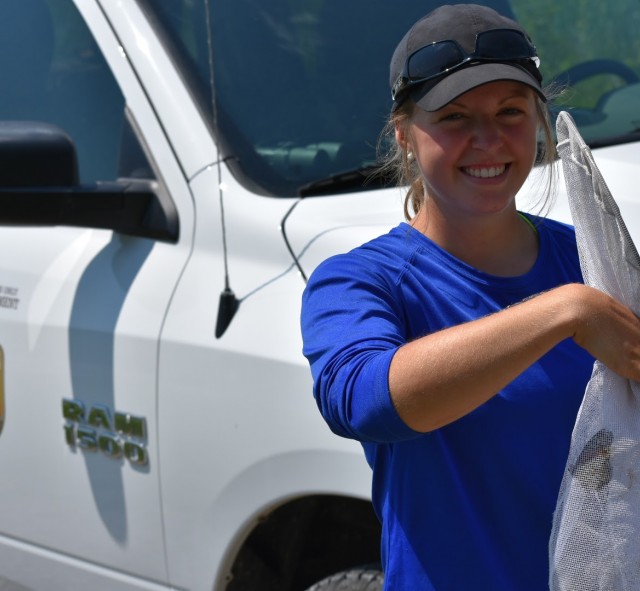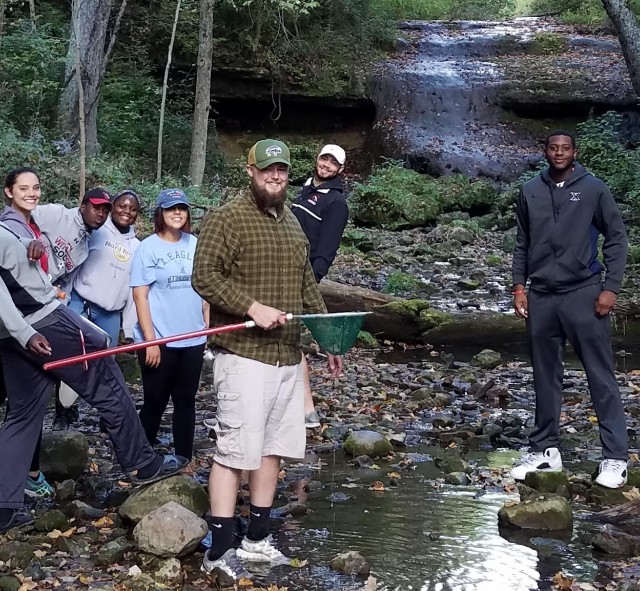Dr. Ritter: Wendell Berry describes this as a “good solution,” one that "improves the balances, symmetries, or harmonies within a pattern ... rather than enlarging or complicating some part of a pattern at the expense or in neglect of the rest." This is a small solution that is at the same scale as the problem itself. Meanders redirect stream flow, from bank to bank. This solution works within that pattern and its impact is felt downstream.
Zach: Good solutions do not address a problem without considering the side effects of the solution. If the eroded part of the bank were simply filled back in, erosion would continue to take place, meaning the bank would continue to need treatment and would continue to be a source of sediment pollution. Log vanes provide an inexpensive but natural solution that immediately addresses the problem at its source, reducing continued erosion. The stream’s flow was the focus of the project. When flow is redirected from the bank, the eroding force is reduced, eliminating the need for consistent bank treatment. We saw the change in flow direction almost immediately. Reduced flow against the south bank will allow for sediment buildup, increasing bank stability.
Dr. Ritter: This makes it a sustainable solution. Berry also describes a “good solution” as one that "solves more than one problem…[and] does not make new problems."
Zach: The log vanes contribute to the overall health and wellness of the stream. A good solution fixes the primary problem while also benefitting other aspects of the stream environment. Log vanes are a good form of bank erosion mitigation because they not only reduce erosion of the bank and stabilize it, but they also maintain, even improve, local habitat.
Dr. Ritter: And the pools produced by scour downstream of the structures, the exposed gravel on the channel bed, the cover provided by the logs, and the shallow water upstream of the logs all provide exceptional, diverse habitat for fish and stream macroinvertebrates. I have been working on Buck Creek because I think it is one of Springfield's most important resources. When you consider that almost the entire corridor of Buck Creek, from the reservoir to its confluence with Mad River, is publicly-held land, you begin to appreciate it as natural capital, assets that provide our community with free goods and services like education and recreation.
Zach: This stream project benefits the Springfield community in many ways. It maintains and adds to the recreational value of the area. The layout was designed so that it would not disrupt the path of kayakers in the area. There is also a nice green area along the bank, cleared by the vanes. I think the most important role this project plays for the Springfield community may be communicating that change is not only needed, but very achievable. Cheap, natural solutions like this create interest. Log vanes probably aren’t something most people have heard about or considered, but an introduction to their use and benefits could positively impact how residents approach natural resource issues and local solutions. It demonstrates an unconventional, yet effective method for problem-solving and may spur interest by others in the local environment and what can be done to improve it. Many large-scale projects require permits, take months to complete, and can cost hundreds of thousands of dollars to complete. This project was completed within two days by seven people at a fraction of the cost – labor and logs.
Jeremy: There is a socio-economic impact from restoration projects like this also. The area of the log vanes is along highly traveled bike trail, providing recreation, environmental aesthetics and an economic boost for the City of Springfield. By installing the log vanes in the area, the City saves money, initially by not having to do more expensive streambank stabilization, but over the long-term because this solution is sustainable and should not need the maintenance other projects require. By keeping the trail open, recreation and the natural aesthetic of the area attract tourists, bringing income to the city.
Dr. Ritter: One of the things I most appreciate is the interest our local partners take in projects like this one. It was even more gratifying that it included one of our own, Jeremy, a 2011 graduate of Wittenberg. Part of the success of this partnership, in my opinion, is the mutual respect we have for our respective missions and each other. It is sort of like “need” meeting “opportunity.”
Jeremy: Having students and faculty from Wittenberg perform the field work or monitoring on various tasks is like another arm of the SCD and NTPRD. Continuing to nurture this relationship creates stronger ties between the community and the university. In addition, as one who is in the field working, the mentoring relationship I have with students allows me to provide guidance and clarity to the next phase in their careers, something previous graduates had to struggle through. By utilizing the skills from both sides, a working relationship has blossomed into a highly effective and productive working relationship and team.
Zach: As a student, I was able to collaborate with you both and National Trail to put this project into place. University engagement with the local community creates opportunities for students and community members alike. It was great for me to see the interest grow in the project over the summer - when interest grows, people talk and change happens.
Dr. Ritter: So, small acts do matter. The impact of two log vanes is broader and more diverse than one might initially think. Their impact is not just local, focused on the immediate problem of bank erosion. In working with the stream, they are a sustainable solution and they provide habitat opportunities for education and recreation. And their benefits flow downstream, an incremental solution to a larger problem, like turning off the lights - or walking to class, picking up litter or planting a tree.
John Ritter Ph.D., 2013 Ohio Professor of the Year from Wittenberg University on Vimeo.
John Ritter, professor of geology and director of environmental science, has been at Wittenberg since 1990. His teaching and research focus on small watershed hydrology and the impact of climate and land use on sediment and water yield.
Zach Smith, class of 2018 from Springfield, Ohio, is an environmental science major and geology minor. He worked for National Trail Parks and Recreation District with a focus on maintenance and restoration of the Buck Creek corridor.
Jeremy Block ’11 manages the Buck Creek corridor for National Trail Parks and Recreation District and Springfield Conservancy District. He has a Master of Natural Resource Stewardship with a concentration in ecological restoration from Colorado State University.


